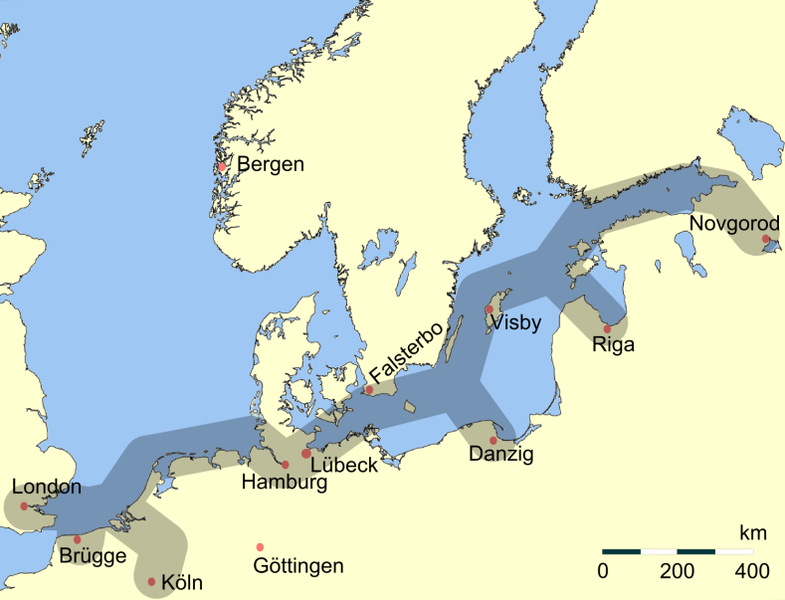The Hanseatic League history
- Details
- Category: Overijssel - places to visit
Resulted from the cooperation between a number of North-German merchants the Hanseatic League grew in the 14th and 15th century into a powerful economic factor.
 Its main objectives were to protect the affiliated merchants and to expand the trade. Survival came first in the broadest sense of the word in this trade community.
Its main objectives were to protect the affiliated merchants and to expand the trade. Survival came first in the broadest sense of the word in this trade community.
The Hanseatic League knew how to acquire favourable privileges by combining its interests.
Moreover the individual merchant felt protected against the whims of feudal lords.
Exchange of knowledge and information also was an important incidental circumstance.
The Hanseatic League knew no less than 150 members in its glory days, in particular in Germany and the Netherlands but also in Scandinavia, Poland, Flanders, and as far as Spain and Portugal.
The trade flow consisted of articles such as salt, fish, corn, wood, beer, wine, cloth, bee wax and furs. The sea and the rivers formed an important link in the transport of these goods also because of the development of the “kogge”, until the 15th century the most important trade ship. In the Hanseatic cities there was activity galore and economy blossomed as never before.
 Prosperity revealed itself in impressive new buildings, decorative merchant houses and impressive merchants offices. The original small settlements developed into mighty cities with impressive city walls and ditto gates. Prosperity also influenced other regions. Painters, architects, poets and philosophers settled down in the city and created a hey-day in the artistic field. We are talking about a Golden Age “avant la letter”. Elements that have left their tracks together in our beautiful Hanseatic cities along the river IJssel!
Prosperity revealed itself in impressive new buildings, decorative merchant houses and impressive merchants offices. The original small settlements developed into mighty cities with impressive city walls and ditto gates. Prosperity also influenced other regions. Painters, architects, poets and philosophers settled down in the city and created a hey-day in the artistic field. We are talking about a Golden Age “avant la letter”. Elements that have left their tracks together in our beautiful Hanseatic cities along the river IJssel!
Hanse cities in Overijssel
Doesburg
Zutphen
Deventer
Zwolle
Kampen
Hasselt
Hattem
